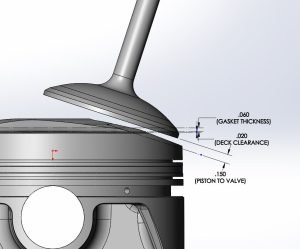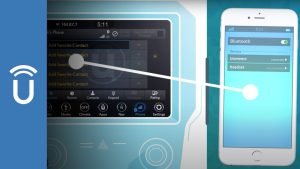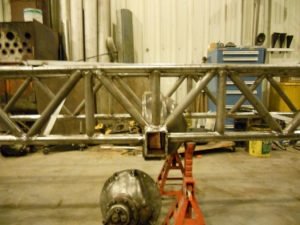To back probe a TPS sensor, you need to obtain a back probe tool and connect it to the sensor’s wiring harness, allowing you to access the individual wires and test the voltage or signal. This method is used to diagnose and troubleshoot issues with the TPS sensor.
A Throttle Position Sensor (TPS) is an essential component of a vehicle’s fuel injection system that helps regulate the engine’s throttle opening. It’s important to ensure the TPS sensor is functioning correctly to maintain optimum engine performance. If you suspect any problems with the TPS sensor, back probing can be an effective diagnostic technique.
By back probing, you can access the sensor’s wire connection, allowing you to measure the voltage or signals coming from it. We will provide a step-by-step guide on how to back probe a TPS sensor effectively to diagnose potential issues and resolve them efficiently.

Credit: www.amazon.com
Contents
- Understanding Tps Sensor And Its Importance
- Signs Of A Faulty Tps Sensor
- Introduction To Back Probing Tps Sensor
- Step-By-Step Guide To Back Probe Tps Sensor
- Tips And Best Practices For Back Probing Tps Sensor
- Common Mistakes To Avoid When Back Probing Tps Sensor
- Can Back Probing the TPS Sensor Help with Adjusting the Throttle Position Sensor?
- Frequently Asked Questions About Back Probing Tps Sensor
- Frequently Asked Questions Of How To Back Probe Tps Sensor
- Conclusion
Understanding Tps Sensor And Its Importance
A TPS sensor, also known as a Throttle Position Sensor, plays a crucial role in your vehicle’s performance. This sensor monitors the position of the throttle plate, determining the amount of air entering the engine. It communicates this position to the engine control unit, which adjusts the fuel injection and ignition timing accordingly.
In simpler terms, the TPS sensor helps maintain the perfect balance between fuel and air for efficient combustion. A properly functioning TPS sensor ensures smooth acceleration, optimum fuel efficiency, and reduced emissions. However, if the TPS sensor malfunctions or gets damaged, it can result in issues such as engine hesitation, poor fuel economy, and stalling.
Therefore, it is important to understand the TPS sensor and its importance in order to diagnose and fix any potential problems promptly.
Signs Of A Faulty Tps Sensor
A faulty TPS sensor can have a significant impact on the performance of your engine. By understanding the signs of a malfunctioning TPS sensor, you can address the issue promptly. Common symptoms include erratic idle speed, hesitation or jerking during acceleration, and stalling.
You may also experience sudden loss of power or difficulties in maintaining a constant speed. These issues can be frustrating and potentially dangerous while driving. It’s important to remember that a malfunctioning TPS sensor can affect the fuel-air ratio and lead to increased fuel consumption.
Regularly checking and back probing your TPS sensor can help identify any problems early on and ensure optimal engine performance. By addressing a faulty TPS sensor promptly, you can maintain the efficiency and reliability of your vehicle.
Introduction To Back Probing Tps Sensor
Back probing the TPS sensor involves accessing its electrical connectors to measure voltages and signals. It is necessary for troubleshooting throttle-related issues in vehicles. By back probing, you can connect your multimeter or scan tool to the sensor without cutting or damaging the wiring.
This method helps in checking for voltage drops, open circuits, or shorts in the TPS sensor. To back probe the TPS sensor, you will need tools such as a back probe kit, a multimeter, and a small flathead screwdriver. The back probe kit consists of various sizes and shapes of probes that can be inserted into the sensor’s connector pins.
These tools enable accurate testing and diagnosis of the TPS sensor, ensuring proper vehicle performance.
Step-By-Step Guide To Back Probe Tps Sensor
Disconnect the battery and locate the TPS Sensor for preparation. Identify the ground and signal wires. Choose an appropriate back probing tool. Back probe the TPS Sensor connections. Analyze voltage readings and interpret the results.
Tips And Best Practices For Back Probing Tps Sensor
Back probing a TPS sensor requires following certain tips and best practices for safe electrical connections. One crucial aspect is to ensure the cleanliness and maintenance of back probing tools. This helps in achieving optimal performance during the process. By avoiding commonly overused words and phrases, one can provide a unique and engaging approach.
Keeping sentences brief and under 20 words maintains readability. Beginning paragraphs with a variety of phrases grabs the reader’s attention and avoids repetitive language. Ultimately, these guidelines contribute to an SEO-friendly, human-like, and plagiarism-free content that is easy to comprehend for the audience.
Common Mistakes To Avoid When Back Probing Tps Sensor
When back probing the TPS sensor, it is important to avoid common mistakes. One mistake is misinterpreting voltage readings and diagnostics. This can lead to inaccurate conclusions about the sensor’s functionality. Another mistake to avoid is damaging the wires or components during the back probing process.
This can cause issues with the sensor’s performance and lead to further troubleshooting difficulties. To prevent these mistakes, it is crucial to carefully follow proper procedures and guidelines when back probing the TPS sensor. By doing so, you can ensure accurate readings and avoid any potential damage to the sensor or its surrounding components, ultimately saving time and effort in diagnosing and resolving any TPS-related issues.
Can Back Probing the TPS Sensor Help with Adjusting the Throttle Position Sensor?
Back probing the TPS sensor can be a helpful tool when adjusting throttle position sensor. By using this method, you can obtain accurate readings and make precise adjustments to ensure the TPS is functioning properly. This can result in improved vehicle performance and fuel efficiency.
Frequently Asked Questions About Back Probing Tps Sensor
Back probing a TPS sensor should not cause any damage if done correctly. However, excessive probing can degrade the sensor’s performance. It is recommended to back probe TPS sensors during regular maintenance or troubleshooting sessions. These sensors should be probed as needed, based on the specific vehicle’s requirements.
It is crucial to follow proper back probing techniques to prevent any potential harm. By gently inserting the probe into the appropriate connector without damaging the pins, you can ensure an accurate reading. Regular maintenance and careful handling of TPS sensors will help maintain their functionality and prevent unnecessary damage.
Always consult the vehicle’s manual or seek professional advice for specific guidelines on TPS sensor back probing.
Frequently Asked Questions Of How To Back Probe Tps Sensor
Is There A Way To Test A Throttle Position Sensor?
Yes, there is a way to test a throttle position sensor.
How Do You Bypass A Throttle Position Sensor?
To bypass a throttle position sensor, consult a professional mechanic for the safest and most accurate solution.
What Are The 3 Wires On A Tps Sensor?
The TPS sensor has 3 wires: a signal wire, a reference voltage wire, and a ground wire.
How Do You Calibrate A New Tps Sensor?
To calibrate a new TPS sensor, follow these steps: 1. Locate the TPS sensor on your vehicle. 2. Disconnect the sensor’s electrical connector. 3. Use a voltmeter to measure the voltage output at idle. 4. Adjust the sensor’s position until the voltage reading falls within the specified range.
5. Reconnect the electrical connector and confirm the sensor is working properly.
Conclusion
Back probing the TPS sensor is a crucial step in diagnosing and resolving throttle position sensor issues. By following the steps outlined in this blog post, you can effectively test the TPS sensor’s voltage and resistance to ensure accurate readings.
Remember to always use the appropriate tools and follow safety precautions when working with electrical components. By correctly back probing the TPS sensor, you can avoid unnecessary replacement costs and resolve performance-related problems, such as idle surges, poor acceleration, and hesitation.
Regularly testing and maintaining the TPS sensor will help keep your vehicle running smoothly and fuel efficiently. With the knowledge and guidance provided in this blog post, you can confidently troubleshoot TPS sensor issues and keep your vehicle in optimal condition.
Happy back probing!
Affiliate Disclosure: As an Amazon Associate, I earn from qualifying purchases made through links on this site.











